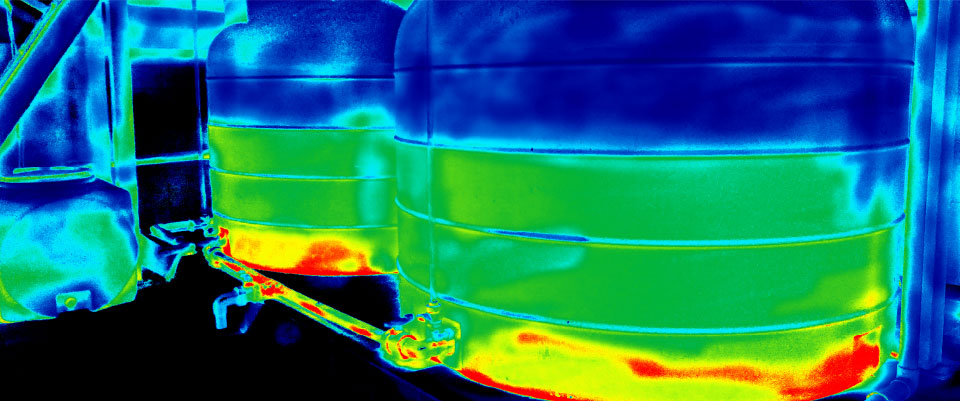
Optimising Solar Performance with Load Shifting
For certain businesses, solar energy is a great solution for reducing energy consumption and costs. However, some industries see most of the energy consumption fall outside of the solar window. This does not necessarily mean that solar is not possible for these businesses, it may just require thought around how loads can be shifted to better fit the solar window.
This article will cover some general strategies to consider around load shifting / maximising solar utilisation.
-
What is the Solar Window?
The ‘solar window’ refers to the time in which energy from the sun can be collected by your solar systems. For most systems, this is around 6:00 a.m. to 6:00 p.m. (with some potential seasonal differences). This may also vary based on the orientation of the system. More details on system orientation are provided further in this article.
-
Determining Your Energy Use Profile
The easiest way to evaluate your current energy use pattern is to install a smart meter. These typically provide data to a portal that can display daily energy use on a graph. Most solar suppliers will include access to a monitoring portal that shows the data from the inverter. This will also provide an overview of the daily energy use profile.
If a smart meter is unable to be installed, a schedule of the equipment used on a typical day, along with the size (kW rating) of the equipment can be used to create an estimated daily load profile. This can at least provide an idea of what times the largest amount of energy is consumed.
-
Adjusting System Configuration to Suit your Usage
If your energy use is generally concentrated within the solar window and more energy is used around the middle of the day, a north* facing system will likely be the best orientation. However, if energy is seen to be concentrated to the morning hours, an eastern orientation may be better suited for the site. Likewise, if energy use is concentrated later in the afternoon, a western facing system may be a better fit the energy use profile. Some industries have energy usage spikes in the morning and late afternoon. For these businesses, a system with solar panels facing both east and west (commonly called an east/west system) provides more solar generation during these times and a smaller midday peak.
(*for systems in the southern hemisphere)
The general difference in energy use for these orientations in shown in the graph below.
Please note that this graph is based on a system in Brisbane, Australia. Generation profiles will vary depending on location and specific system configurations.
-
Solar Orientation Variations

In the case where the energy use is significantly lower during the midday solar energy generation peak when compared to morning and/or late afternoon usage, a load shifting approach can be applied to achieve more utilisation on the generated solar energy.
-
Adjusting Usage Profile to Fit Solar Window
Load shifting is a method for achieving better utilisation of a solar system. It requires either shifting equipment usage schedules to fit the solar window, or the introduction of a process that can be powered through solar energy and will reduce the energy required from the grid at other times. This can be in the form of a battery or thermal storage.
Shifting equipment schedules requires monitoring equipment energy use and where possible, moving the energy-intensive equipment to the middle of the day so that more solar generation can be used to power this equipment.
Thermal storage generally refers to heating or cooling water or a refrigerant during the solar window to be used for thermal requirements at another time of the day.
Depending on how your business operates different strategies can be applied to ensure solar is being utilised effectively.
If you believe that the load shifting method could improve your utilisation of solar energy and subsequently reduce your reliance on grid energy, the best way to approach this would be to install or review an existing smart meter.
Equipment scheduling can be performed by site staff, while load shifting with thermal storage or batteries will likely require an evaluation from energy specialists.
CASE STUDY: Load Shifting with Thermal Storage on a Dairy Farm
Dairy farms typically operate with two milking periods per day, occurring in the early morning and the late afternoon. Often there is also minimal energy consumption that occurs during the middle of the day. This is generally not ideal for a solar installation.
A site in Queensland was assessed with business as usual consumption. This resulted in a solar utilisation of 54%. Using a solar PV system to chill water during the day and pumping this water through the milk vats and/or plate cooler was seen to increase the potential solar utilisation to 84%.
This load shifting method resulted in a 30% reduction in the annual energy consumption for the site.
The ‘Business as Usual’ case (Current Load Profile) and the Load Shifted Profile are demonstrated in the graph below.

Read more in a case study of the Websters Group energy audit published by the Queensland Farmers Federation – Case Study.
Conclusion
Since solar is a long term investment it pays to review the correct orientation if available and consider if substantial changes to energy to fit within the solar window make sense?
Before looking to battery storage, thermal energy storage (water/ice) can be more cost-effective for refrigeration heavy businesses.
Interested in reviewing the business case for thermal energy storage on your site? Drop us a line